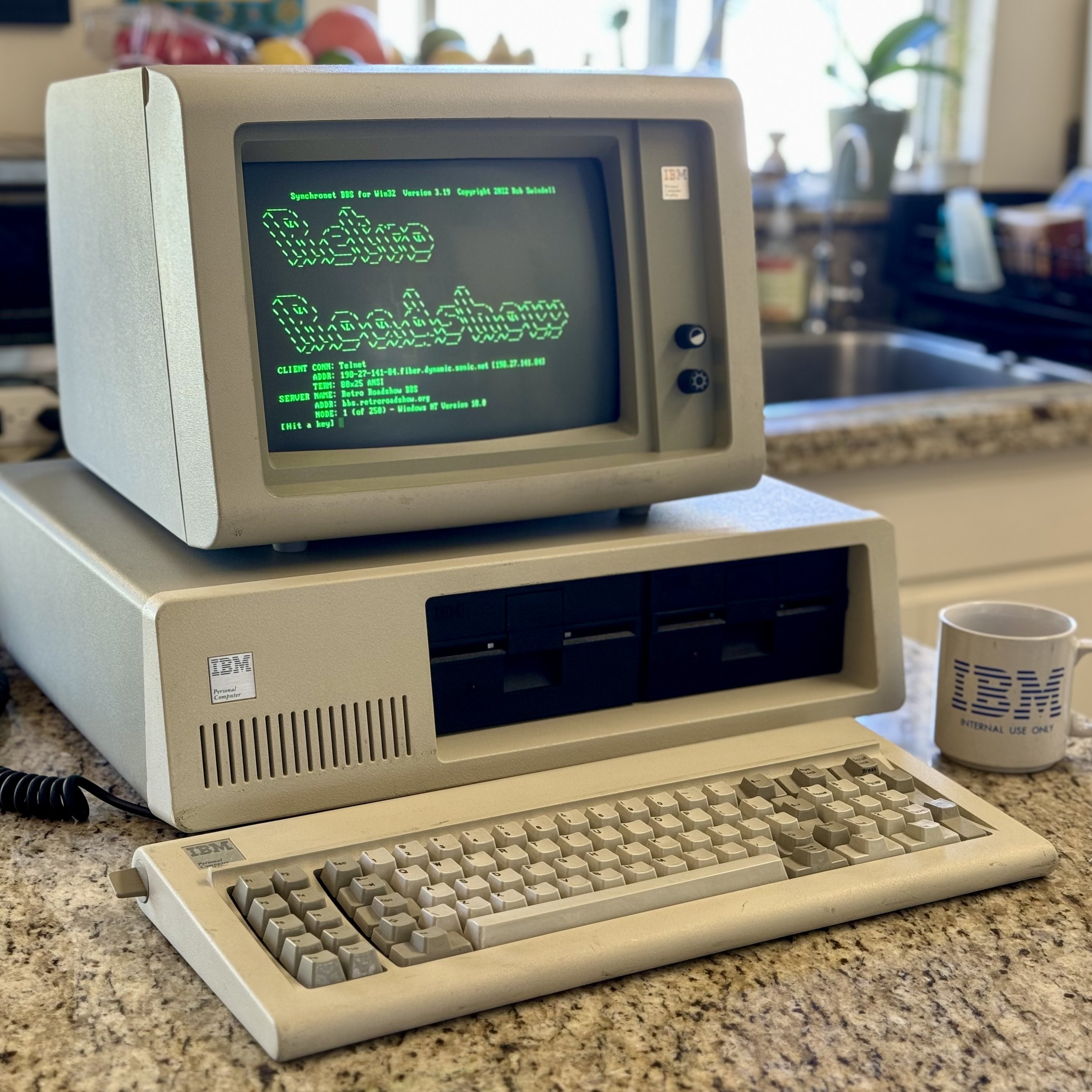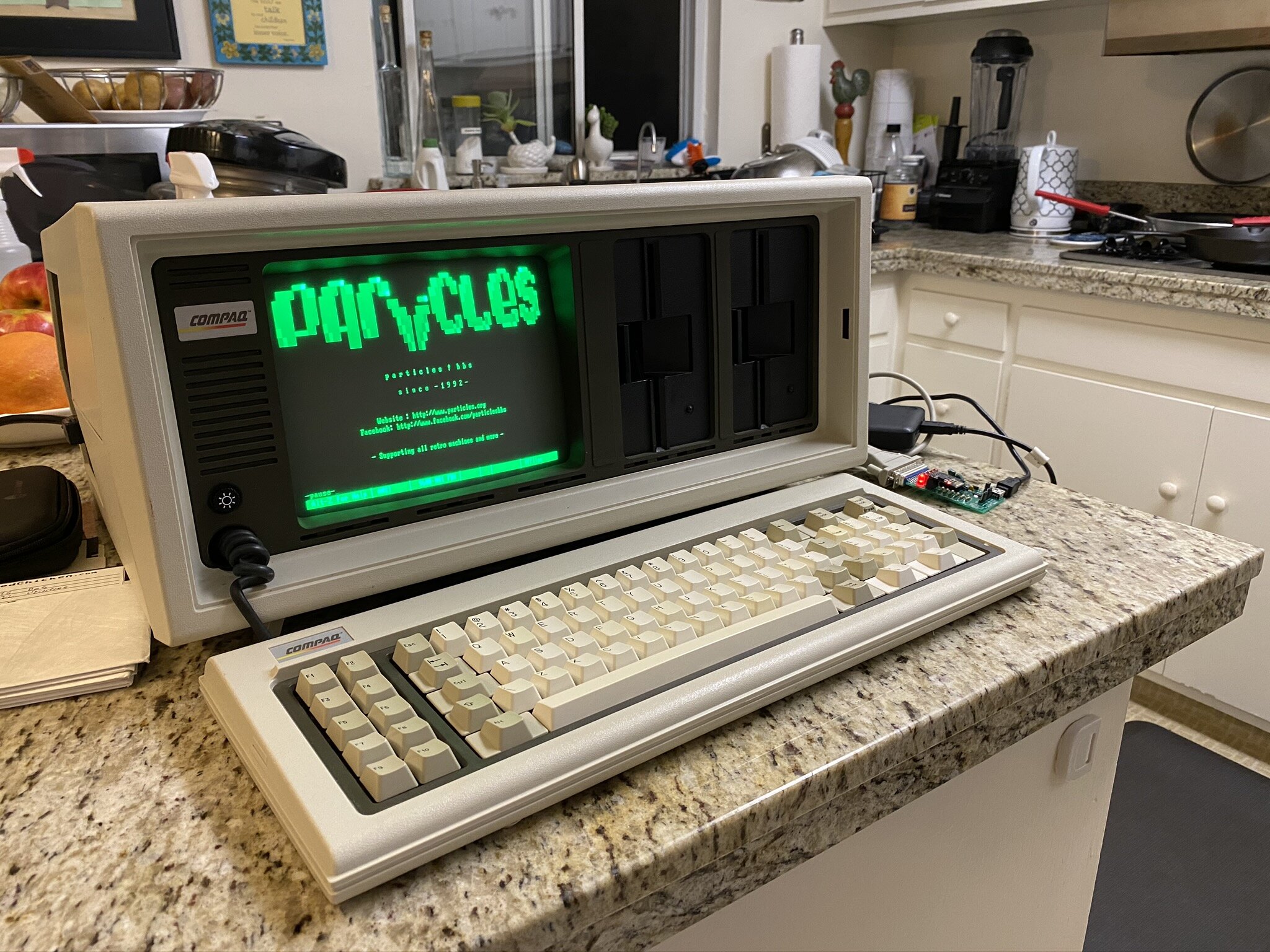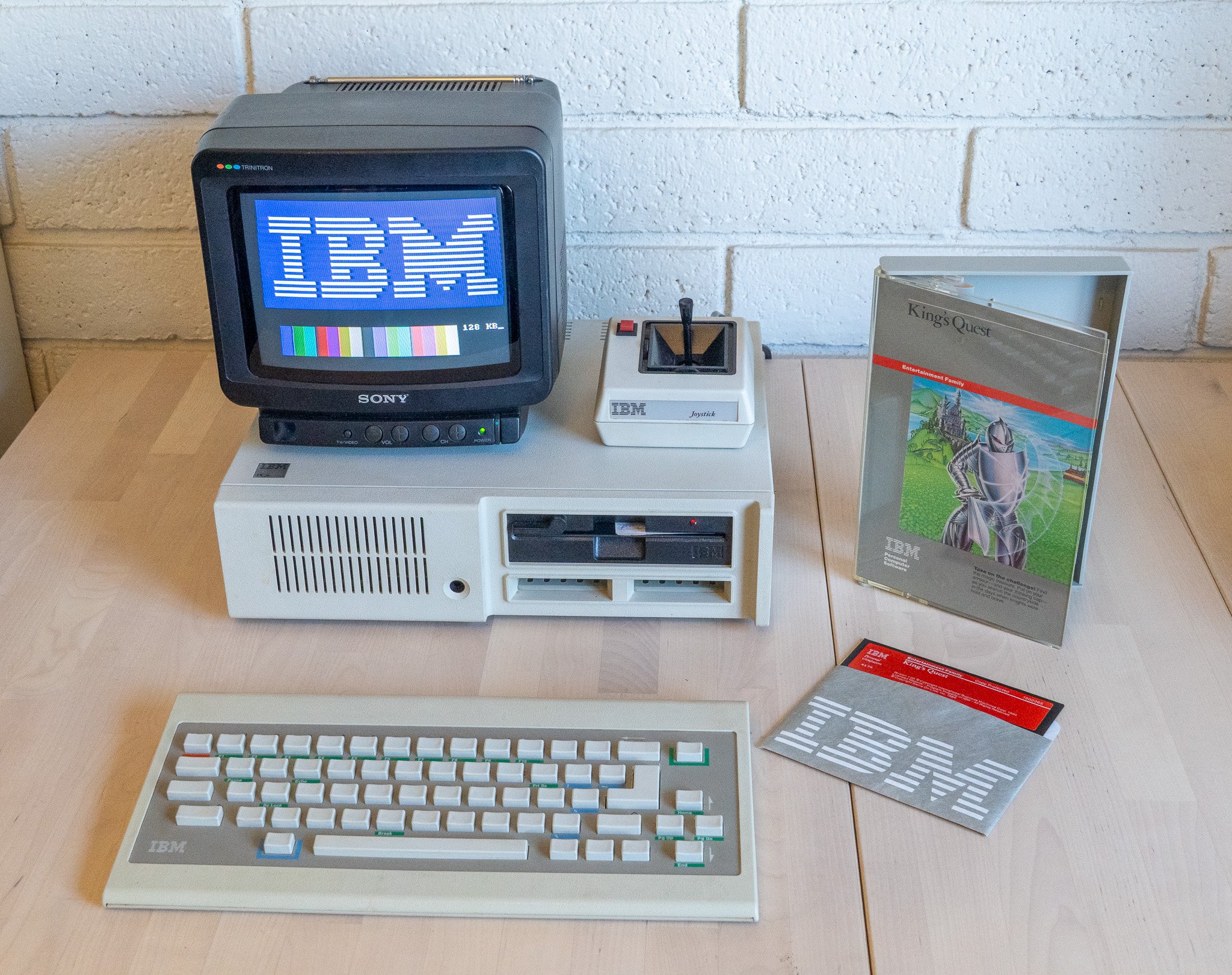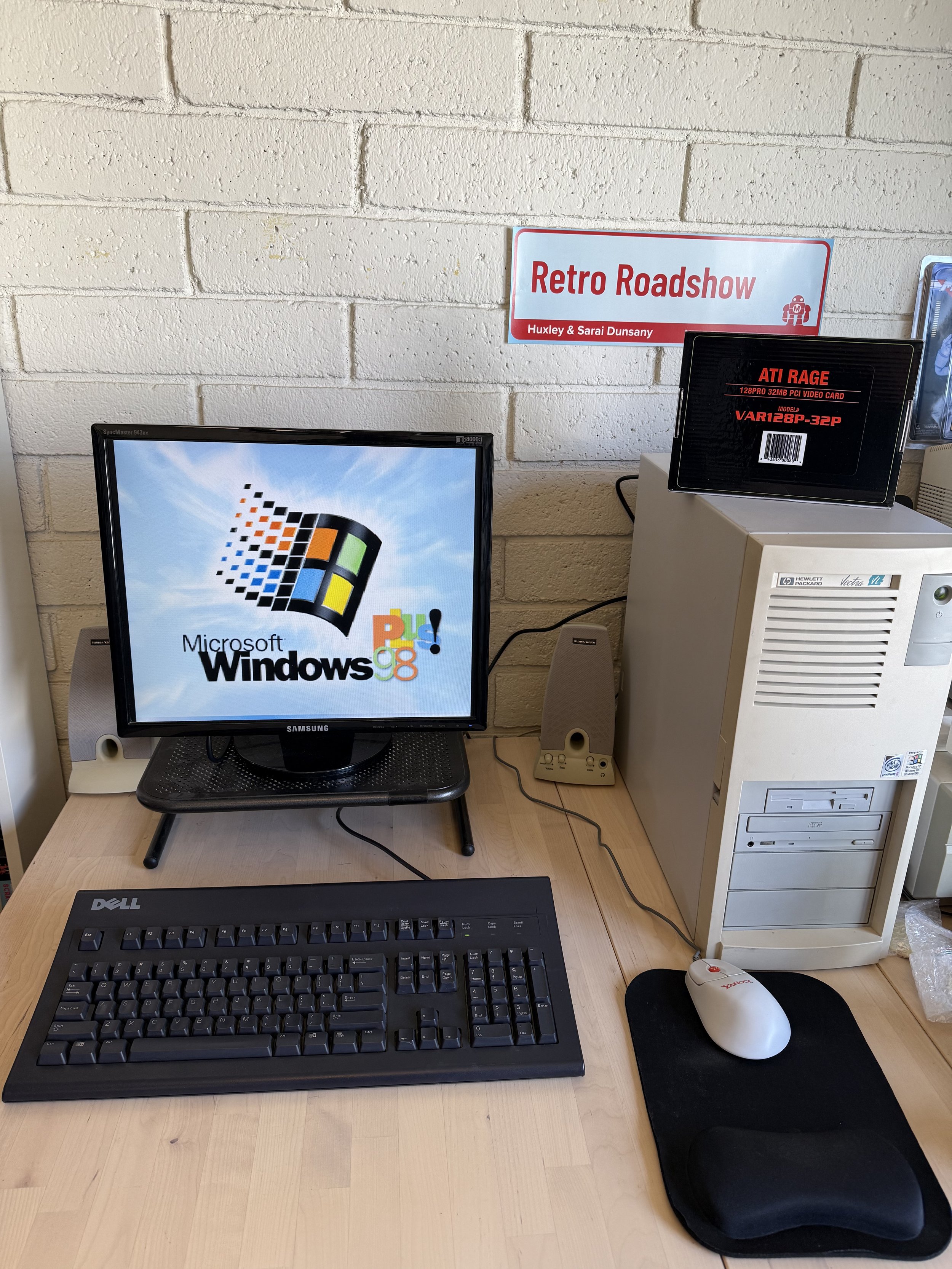MS-DOS Personal Computers
While The Retro Roadshow collection of vintage computers mostly focuses on more esoteric systems, we are home to a small but compelling set of machines from the Microsoft DOS and “Wintel” ecosystem.

The impact of the IBM Personal Computer (model 5150) literally cannot be overstated. As the machine which birthed the "IBM Compatible" ecosystem which is still going strong today, the IBM PC represents a landmark moment in computing history, when "Big Blue" jumped into the burgeoning microcomputer market. Complete with its original "green screen" monitor and the legendary (and shockingly heavy) Model F keyboard, our IBM PC is a beloved exhibit at Retro Roadshow events.

When IBM released their original "Personal Computer," they assumed that their immediate dominance of the fledgling industry was assured. However, Bill Gates's wily contractual terms in the license agreement that IBM signed for MS-DOS allowed Microsoft to offer the same operating system to other hardware vendors. Seeing an opportunity, three former Texas Instruments managers started a new company the called Compaq (a portmanteau of "Compatibility And Quality"), and set about "reverse engineering" the IBM PC. The resulting product was the Compaq Portable, a 100% IBM-compatible computer (in fact, the first fully-legal "PC clone") condensed into a 28lbs "luggable" format. The Retro Roadshow is delighted to have a fully-restored and upgraded Compaq Portable in the collection.

1984 was a strange time in the fledgling microcomputer market. Despite being the dominant vendor of machines for home users, Apple was obsessed with stealing away IBM's corporate customers, resulting in the ill-fated Apple III business computer. Simultaneously, IBM was determined to steal Apple’s consumers and home users, resulting in the ill-fated IBM PCjr. Offering a bizarre mix of features including dual cartridge slots, an ambitious infrared wireless keyboard which in practice was awful for actual typing, and (most damning) only "partial" compatibility with a "real" IBM PC, the PCjr was a catastrophic flop. However, despite all its flaws, the PCjr is a surprisingly charming computer offering a small but entertaining library of apps and games, including the first release of “King’s Quest,” a series which went on to become a beloved icon of PC gaming… unlike the PCjr where it was born.

The Hewlett-Packard Vectra VL was marketed as a high-performance desktop workstation, mostly aimed at "power users" doing 3D drafting and CAD work. Sporting a 450MHz Pentium II processor (the fastest ever released in that chip series) and an onboard 3D graphics accelerator, the Vectra VL was an excellent showcase of what a top-of-the-line Windows workstation looked like in the late 1990's.

Custom-built by The Retro Roadshow from parts obtained from yard sales, thrift shops, vintage computing forums, and eBay, this Intel Celeron-powered "Millennium Era" PC is designed to exemplify what an ambitious but budget-conscious gamer might have built in the early 2000's. Loaded with classic games and sporting some unusual accessories (including the SpaceOrb360, an early attempt at a VR-style controller), this machine has been a beloved feature of our PC-centric events.